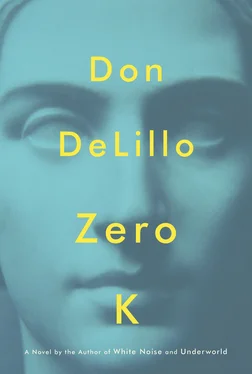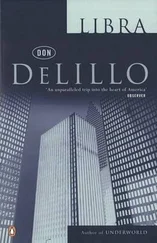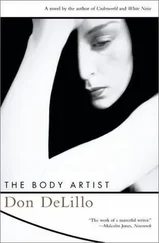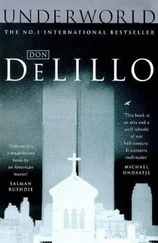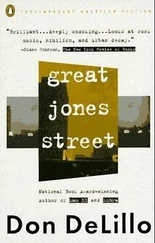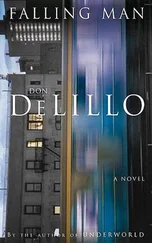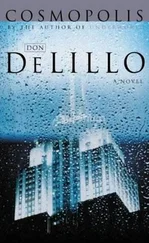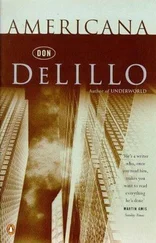Nanobots — a child’s word.
I kept looking straight ahead, looking and thinking. The fact that these individuals, these heralds, had chosen to be rendered dead well before their time. The fact that their bodies had been emptied of indispensable organs. The fact of containment, alignment, bodies set in assigned positions. Woman man woman. It occurred to me that these were humans as mannequins. I allowed myself to think of them as brainless objects playing out a reversal of the spectacle I’d encountered earlier — the mannequins hunched in their burial chamber, in hoods and robes. And now this freeze-frame of naked humans in pods.
The guide told us again that there was another area of possible interest.
I wanted to see beauty in these stilled figures, an imposing design not of clockwork bodies but of the simple human structure and its extensions, inward and out, each individual implacably unique in touch, taste and spirit. There they stand, not trying to tell us something but suggesting nonetheless the mingled astonishments of our lives, here, on earth.
Instead I wondered if I was looking at the controlled future, men and women being subordinated, willingly or not, to some form of centralized command. Mannequined lives. Was this a facile idea? I thought about local matters, the disk on my wristband that tells them, in theory, where I am at all times. I thought about my room, small and tight but embodying an odd totalness. Other things here, the halls, the veers, the fabricated garden, the food units, the unidentifiable food, or when does utilitarian become totalitarian.
Was there a hollowness in these notions? Maybe they were nothing more than an indication of my eagerness to get home. Do I remember where I live? Do I still have a job? Can I still bum a cigarette from a girlfriend after a movie?
The guide had told us about brains preserved in insulated vessels. Now she added that heads, entire heads with brains intact, were sometimes removed from the bodies and stored separately. One day in decades to come the head will be grafted to a healthy nanobody.
And would all the revivified lives be identical, trimmed tight by the process itself? Die a human, be reborn an isometric drone.
I nudged my father and said quietly, “Do they ever get a hard-on, dead men in pods? Jolted by some malfunction, a shift in temperature levels that creates a kind of zing running through the body and causing their dicks to spring up, all the men at once, in all the pods.”
“Ask the guide,” he said.
I gave him a backhand tap on the arm and we got up and followed the woman down a corridor that tapered to the degree that we had to proceed, finally, single-file. Sound began to pale, our footsteps fading, the brush-touch of our bodies against the confining walls.
There is one thing more, something interesting, the guide had said.
We stood in the entranceway of a large white room. The walls did not have the same rough surface I’d seen elsewhere. This was hard smooth rock and Ross put his hand to the wall and said that it was fine-grained white marble. He knew this, I did not. The room was stone cold and, at first, in every direction, it was all the same, nothing but walls, floor and ceiling. I spread my arms in a dumb dramatic gesture to render the size of the grand space but restrained myself from trying to estimate length, width and height.
I moved forward, briefly, and Ross followed. I looked past him to the guide, waiting for her to say something, give us some clue to the nature of the site. Was it a site or just an idea for a site? My father and I studied the room together. I tried to imagine what I was seeing even as I saw it. What made the experience so elusive? A large room, a couple of men standing and looking. A woman at the entrance, dead still. An art gallery, I thought, with nothing in it. The gallery is the art, the space itself, the walls and floor. Or an enormous marble tomb, a mass gravesite emptied of bodies or waiting for bodies. No ornamental cornice or frieze, just flat walls of shiny white marble.
I looked at Ross, who was staring past me toward a far corner of the room. It took me a moment, everything here took me a moment. Then I saw what he saw, a figure seated on the floor near the junction of the two walls. Small human figure, motionless, seeping gradually into my level of awareness. I had to tell myself that I was not somewhere else trying to visualize what I was actually seeing, here and now, in solid form.
My father walked in that direction, hesitantly, and I followed, walking and pausing. The seated figure was a girl, barefoot, legs crossed. She wore loose white pants and a white knee-length blouse. One arm was raised and bent toward the body at neck level. The other arm was waist-high at a matching angle.
We stopped walking, Ross and I. We were still some distance from the figure but it seemed an intrusion, a violation, to move any closer. Hair trimmed in a mannish cut, head bowed slightly, feet positioned with bottoms turned upward.
Was I sure that it was not a boy?
Her eyes were closed. I knew that her eyes were closed even if this was not evident from where we stood. Her youth was not necessarily evident but I felt free to believe that she was young. She had to be young. And she had no nationality. She had to be nationless.
A chill white silence everywhere in the room. Did I fold my arms across my chest to contain my response to the beauty of the scene, or was I just cold?
We backed away then, slightly, simultaneously. Even if I knew the reason for her presence and her pose, it would defy all meaning. Meaning was exhausted in the figure itself, the sight itself.
“Artis would know how to interpret this,” Ross said.
“And I would ask her whether it’s a boy or girl.”
“And she would say what’s the difference.”
The fact of life, one small body with beating heart in this soaring mausoleum, and she would be here long after we were gone, day and night, I knew this, a space conceived and designed for a figure in stillness.
Before we left the area I turned to take one last look and, yes, she was there, in empty method, a living breathing artform, boy or girl, seated in pajamalike garments, offering nothing more for me to think or imagine. The guide led us down a long hall that was not bordered by doors and Ross began to speak to me now, a faraway voice, close to the trembling bend.
“People getting older become more fond of objects. I think this is true. Particular things. A leather-bound book, a piece of furniture, a photograph, a painting, the frame that holds the painting. These things make the past seem permanent. A baseball signed by a famous player, long dead. A simple coffee mug. Things we trust. They tell an important story. A person’s life, all those who entered and left, there’s a depth, a richness. We used to sit in a certain room, often, the room with the monochrome paintings. She and I. The room in the townhouse with those five paintings and the tickets we saved and framed, like a couple of teenage tourists, two tickets to a bullfight in Madrid. She was already in poor condition. We didn’t say much. Just sat there remembering.”
There were long pauses between sentences and his tone was near to a murmur, or an underbreath, and I listened hard and waited.
Then I said, “What is the fond object in your case?”
“I don’t know yet. Maybe I’ll never know.”
“Not the paintings.”
“Too many. Too much.”
“The tickets. Two small slips of paper.”
“Sol y sombra. Plaza de Toros Las Ventas,” he said. “We were seated in an area that’s sometimes in the sun, sometimes in the shade. Open area. Sol y sombra.”
He wasn’t finished, a man propelled into obsessive reflection. He talked, I listened, his voice more halting, the subject more elusive. Did I want to stare at the guide and try to think of us together in a room, my room, she and I, the guide, the escort, or just visualize her alone, nowhere, a woman stepping out of her shoes. I felt an erotic wistfulness but could not shape it.
Читать дальше
